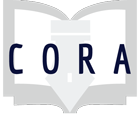Students are asked to identify necessary citation information, place the information in the correct citation order and then identify the source type. Students are first given a set of sources for practice that are not graded. The second series of sources is graded.
Assignments
In this activity, students are asked to identify necessary citation information, place the information in the correct citation order and then identify the source type. To begin, the student is shown four sources on the topic of Mars exploration, these questions are for practice and are not graded. The second set of four sources on the topic of refugees is graded. (This module was partially adapted with permission from Grand Valley State University Libraries.)
Do students eyes glaze over when you begin to talk about citation formats? Show students the value of learning about citations by having them practice on real content! Students must identify the needed parts of 3 real publications and drag them to the appropriate category, i.e. Journal Title, Volume, Page Number. Upon completion of the activity, students are show the MLA citation for each publication.
An icebreaker activity for students at any level, “Visualizing Research” employs tactile or kinesthetic learning techniques to illustrate research as inquiry. This group activity can be used in a variety of disciplines and contexts. By having students create and share visual models of their ideas or experiences with research, the lesson plan increases classroom engagement and supports an understanding of the iterative process of research.
This lesson was created to help further discuss issues surrounding plagiarism after a quick introduction at orientation. It was created for pharmacy PhD students but I do believe it could be useful for many learner types. A large focus on this lesson was why it is important not to plagiarize with emphasis on oppression through traditional citation and review practices. Inspiration and/or content obtained from: Conner-Gaten, Aisha.
Embedded library modules in online, stand-alone website used by second semester English Composition classes for freshman level students. This set of modules is co-authored with Mario Leyva, Assistant Director, Instruction and User Services at Our Lady of the Lake University, and Forrest Davidson. All coursework and assignments are available for download; quizzes available upon request.
This lesson was given to a health career academy that consists of high school and undergraduate students. The students have a strong interest in careers in the health sciences but have yet to start their education through health sciences programs. The point of the session was to understand how disparities and health literacy intersect and will be important factors in the work they do as learners and providers and to empower the students to use their cultural wealth and voices to make change. I am attaching the slides with notes (which acted as my lesson plan for this session).
This algorithmic literacy workshop puts a new spin on media literacy by moving beyond fake news to examine the algorithms that shape our online experiences and how we encounter information in our everyday lives.
A lesson plan for a 45-minute lower-division Sociology class. The texts used in the plan are Elijah Anderson (1999) Code of the Street: Decency, Violence, and the Moral Life of the Inner City and Thomas L. McNulty and Paul E. Bellair (2003), “Explaining Racial and Ethnic Differences in Serious Adolescent Violent Behavior,” which the students were to have read in advance.
This sample activity corresponds to a chapter in the upcoming (2022) ACRL title: Teaching Critical Reading Skills: Strategies for Academic Librarians.
